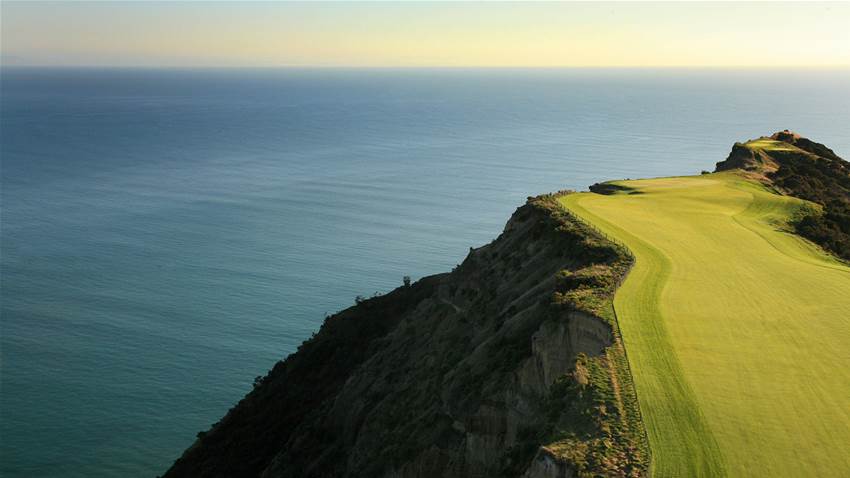New Zealand’s North Island is one of the most scenic destinations on the planet. And its rolling hills and clifftops have become home to some world-class golf courses.
The night is only a pup, and the twinkling lights dance and frame the harbour as a crisp sea breeze fills my lungs with salty air. I am sitting outside a lively bar in Auckland – and I can’t wipe the smile off my face.
Perhaps it’s because the beer has started to work its magic, or because of the waitress who just poured me another … But I get the feeling it has something to do with the quality of golf that’s on offer in this glorious part of the world. We are blessed with some truly great golf courses in Australia – but our neighbours across the Tasman have plenty to brag about, too.
Despite its proximity to home, as well as its prominence on my ‘to-do’ list, I had never before paid a visit to New Zealand. Happily, however, any of the preconceived notions I once held about the beauty and mystique of the North Island had either been realised or enhanced throughout my journey. The vast, unspoiled landscapes beggar belief. And the charismatic cities and towns are oozing with culture, diversity, and all sorts of entertainment.
As for the golf, well, Kiwis are certainly spoiled for choice. In fact, outside of Scotland, New Zealand boasts more golf courses per capita than any other country in the world. The North Island itself lays claim to three of the world’s top-100 courses, including Cape Kidnappers and the uber-exclusive Tara Iti – both designed by renowned architect Tom Doak, who has something of an affinity for the island nation.
“No country has seen its golf courses improve more over the past 20 years than New Zealand,” he stated.
Cape Kidnappers is one of Doak’s most splendiferous creations and lies atop the jagged clifftops in Te Awanga at Hawke’s Bay. Owned by American hedge fund manager, philanthropist and billionaire, Julian Robertson, the property is truly remarkable, both geographically and architecturally.
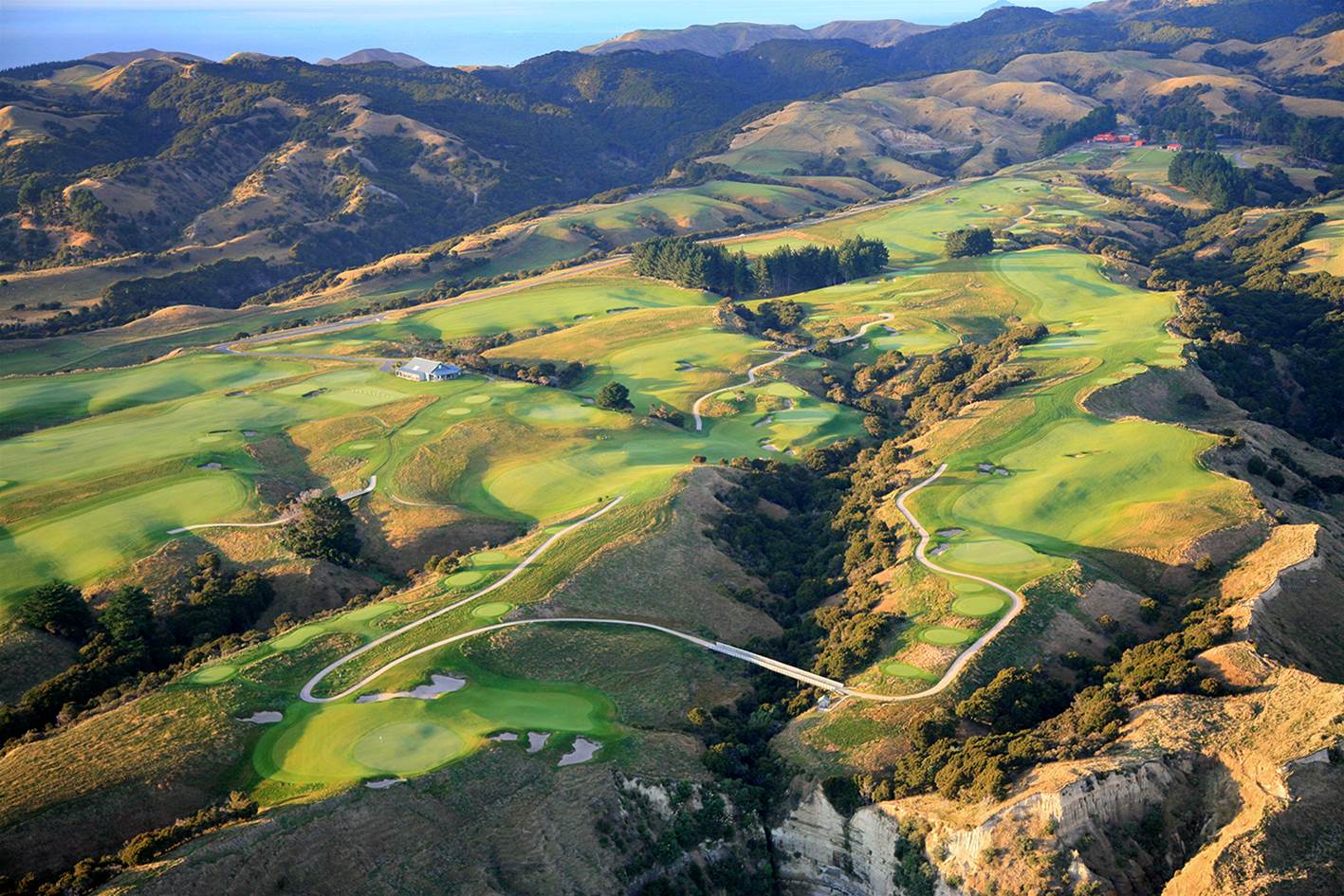
There is no question that Doak was handed one of the best canvases a designer could possibly hope for – and it is easy to suggest that anyone could have created a great track from the land available. But his routing and minimalist approach has produced a layout that blends seamlessly with the natural environment and provides the golfer with a scenic and immersive test.
The playing surfaces are immaculately maintained – and there is a pleasing lack of differentiation between the fescue fairways and greens, which upholds the spirit of links golf and allows for playability. The bunkering is well-thought-out but it is not overdone, while the green complexes are exciting, diverse and challenging.
It is a fair course that embraces the elements, places a premium on positioning, rewards good play and punishes bad shots. Its magic, like a lot of great places, is that it appears difficult, but it very rarely beats you up.
Dissecting and selecting a signature stretch of holes is not an easy task – purely because of the memorable nature of each and every hole – but, like a lot of people before me, I found myself smitten between 12 and 16.
The 12th is a lengthy par-4 and is aptly-named ‘Infinity’ because the sky so often blends with the ocean, which can make the horizon rather difficult to spot. This visual illusion usually means first-time visitors (myself included) will become tentative and leave their approach shots short, because it appears as though anything too long will fall off the face of the earth.
The stunning par-3 13th speaks for itself, playing along the edge of the headland, but the following two-shotter really captured my attention. Short par-4s are supposed to produce a range of different scores. They should entice players off the tee; provide both safe and dangerous playing lines; and encourage and allow for various clubs to be selected. Each of those principles has been incorporated within ‘Pimple’, which draws its name from the prominent bump located on the left portion of the drivable green.
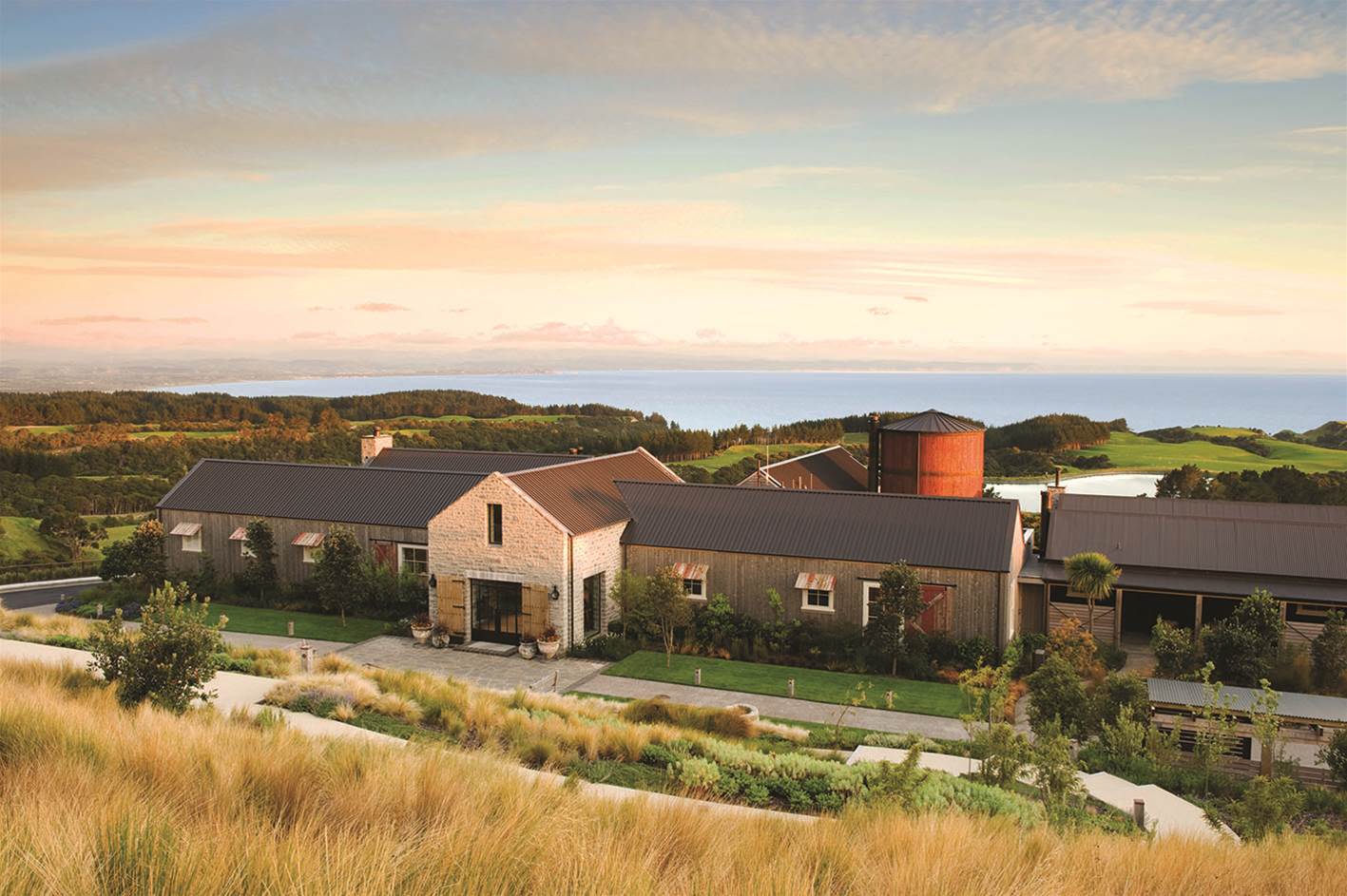
The course is complimented by an understated yet charming clubhouse – where no detail has been ignored, and every guest is made to feel welcome by the attentive and friendly staff. While The Farm at Cape Kidnappers sits on pasture land and offers luxury lodges that are truly spectacular. Yes, they come with quite the price tag, but it is something you are likely to treasure for the rest of your life.
 Speaking of memorable experiences … Taking a tour through Napier in a vintage Packard is a fantastic way to see some of the town’s world-class Art Deco architecture. These buildings were constructed in response to the 1931 Hawke’s Bay earthquake – the nation’s deadliest natural disaster. The Art Deco Trust delivers informative and enjoyable classic car tours, and can pick you up from any of the region’s award-winning vineyards (Craggy Range is exceptional).
Speaking of memorable experiences … Taking a tour through Napier in a vintage Packard is a fantastic way to see some of the town’s world-class Art Deco architecture. These buildings were constructed in response to the 1931 Hawke’s Bay earthquake – the nation’s deadliest natural disaster. The Art Deco Trust delivers informative and enjoyable classic car tours, and can pick you up from any of the region’s award-winning vineyards (Craggy Range is exceptional).
New Zealand is, of course, one of the world’s leading wine producers. So, if you like your crushed grapes as much as I do, paying a visit to Waiheke Island will be right up your alley. The island, which is home to over 30 vineyards and wineries, can be reached in under 45 minutes on board one of Auckland’s ferries and makes for a terrific day trip.
The country’s largest city is also home to the newly-opened Windross Farm, which hosted the 2017 New Zealand Women’s Open. Designed by Brett Thomson and New Zealand touring pro, Phil Tataurangi, the former potato, corn and dairy farm was unveiled to the public in September, 2016.
Its history as farmland – and as a flat landscape – meant more than 350,000 cubic metres of soil was needed to be brought in to create the layout. Meanwhile, more than $1.3 million was spent on drainage to ensure the course remained playable year-round. It worked. Despite receiving hundreds of millimetres of rain last year, the inland, links-style course stayed open; its wide fescue fairways and colonial bentgrass greens kept perfectly healthy.

The pick of the holes, for mine, comes during the captivating closing quartet – where, at the 17th tee, the adjacent strawberry farm tempts players to jump the fence for some freshly-made ice-cream. Tackling this tricky tee-shot, which demands a precise approach to a semi-island green, is therefore (usually) made much more enjoyable.
To have successfully welcomed the LPGA Tour in just its first year of existence says as much about Windross Farm as anything else ever could. And although the tournament faced problematic weather conditions – which put event organisers under pressure and caused controversy – the venue held its own to eventually produce what was an exciting result.
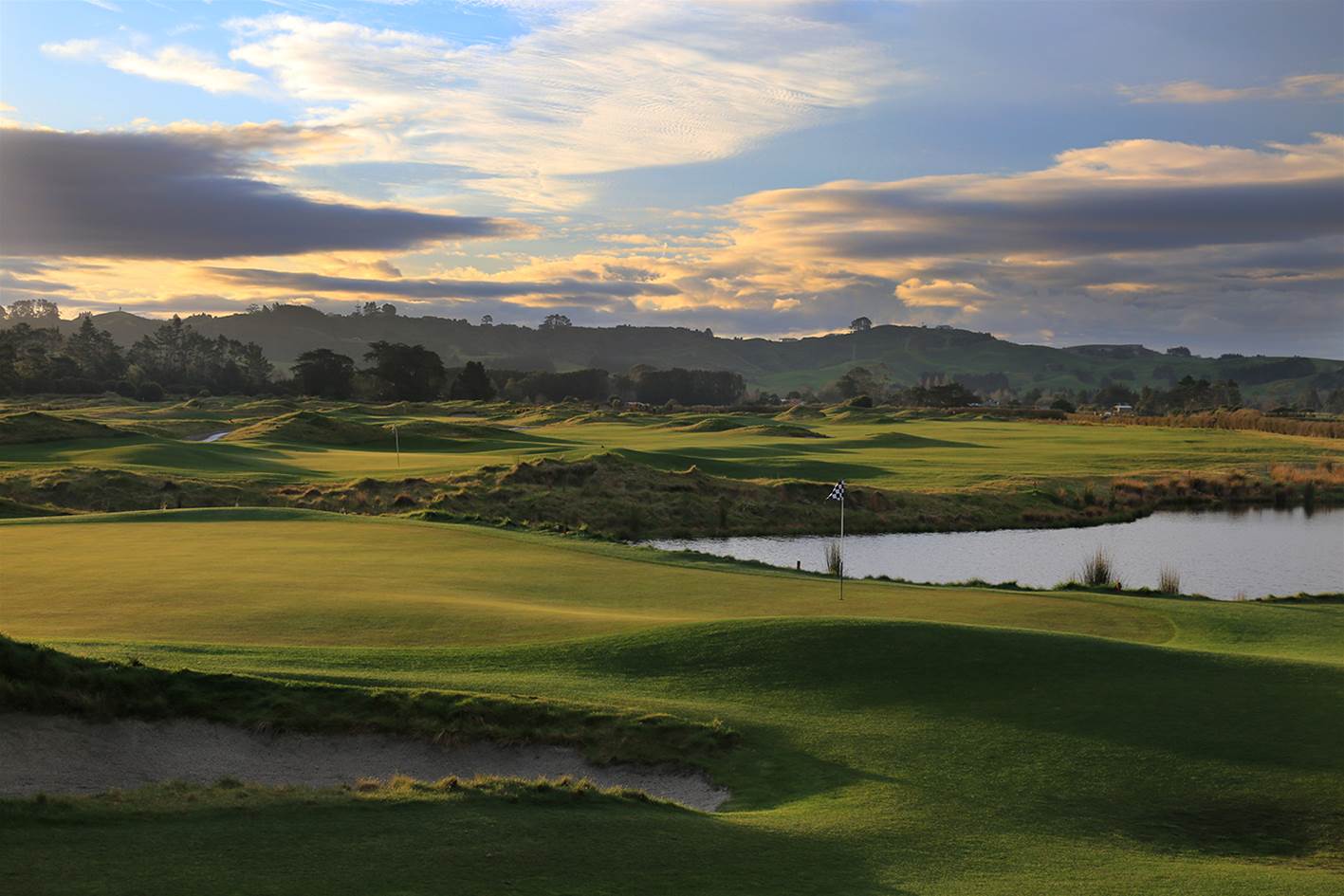
So, too, did Royal Wellington Golf Club when it threw open its gates to welcome the 2017 Asia-Pacific Amateur Championship. The Heretaunga course was extensively redesigned by Greg Turner and Scott MacPherson in 2013, and lies adjacent to the Hutt River at the base of the mountains in Upper Hutt.
It is one of those places that just feels special. Its presentation is flawless – and the flowing streams, birdlife, gardens and physical location each combine to create the sensation you’ve stepped into a national park. The undulated fairways are well-maintained, lush and tree lined. While the large, sloped greens are guarded by elegant bunker schemes to allow for multiple pin positions.
To be afforded the opportunity to watch the region’s best amateurs plot their way around the parkland layout was an insightful process. But it didn’t help as much as I might have hoped when I attempted to emulate their great play.

Accuracy is paramount here. Players who have a deep understanding of their game and can control their ball flight will generally find success. It is a tactical challenge that cannot be overcome by raw power alone – which is why it has become such an appropriate venue for tournament golf.
For most, holes 3, 4 and 5 will be identified and highlighted as the standout sequence on offer. And I can certainly understand why. The par-5 4th, in particular, is one of Royal Wellington’s most scenic and exciting holes to play or observe. But I concluded that a short par-4 on the back nine was the pick of the bunch.
The 14th hole may not sound drivable at 300 metres, but taking a direct route to the green will shorten it considerably. However, that attacking option is fraught with danger and will bring dense grass and water into play.
The hole shapes from left to right, and the green is protected from bombs off the tee by cavernous bunkers. But what makes it such a good hole, to me at least, is that none of my playing partners recorded the same number of strokes as one another.
Royal Wellington Golf Club is less than a 30-minute drive from the CBD – where restaurants, cafés and the Wellington Cable Car await. The Rydges Hotel is close to it all, and provides comfortable and affordable rooms.
Another fascinating place to visit on the North Island is Lake Taupo. This freshwater lake has a surface area of more than 600 square kilometres, making it approximately the same size as Singapore. From observing the geothermal activity at the ‘Craters of the Moon’ to a jet-boat ride at the base of the Huka Falls, there is plenty to keep you occupied. Oh, and there are a number of good golf courses, too.
 Two of the very best are Wairakei Golf & Sanctuary and The Kinloch Golf Club. Kinloch is the only Jack Nicklaus Signature golf course in New Zealand – and is often mentioned in the same breath as Kauri Cliffs, Cape Kidnappers and Tara Iti as one of the North Island’s premier courses.
Two of the very best are Wairakei Golf & Sanctuary and The Kinloch Golf Club. Kinloch is the only Jack Nicklaus Signature golf course in New Zealand – and is often mentioned in the same breath as Kauri Cliffs, Cape Kidnappers and Tara Iti as one of the North Island’s premier courses.
The Lodge at Kinloch opened in 2016 – nine years after the completion of the course – to allow visitors the option of staying in luxury on-course accommodation. The reception area and restaurant is perched atop a hill, and boasts 180-degree views of the property and lake.
Many observers tend to agree that Nicklaus-designed tracks are too difficult for the average punter. But Kinloch bucks that trend, for the most part, with its fair and occasionally ‘gettable’ layout. The exception to that rule, however, is the number of blind tee shots which, for the traveling golfer, will most probably result in some unnecessary punishment.

My playing group unanimously agreed that the closing trio of holes was the highlight of the day. But the par-4 6th is what generated the most conversation.
The tee points directly towards the green – but the playing surface lies 45 degrees to the right. It is simple to see the correct playing line. Club selection, however, becomes a huge challenge. And anyone game enough to attack the green with their drive will need to clear the better part of 300 metres to avoid the unforgiving wasteland.
Thankfully, the drive to our next destination was much less daunting. I’m not sure I’ve ever set foot on a golf course as enchanting as Wairakei. From the Ponga-fern bunker faces to the Tui-bird tee markers, the Peter Thomson and Mike Wolveridge-designed layout is completely charming.

The native flora and fauna abound and – like a lot of properties in the area – features a working predator fence. There is also an on-site biologist to watch over the Takahe birds, which were once thought to be extinct and are rarer than the Kiwi bird.
Wairakei’s bentgrass greens may not be as exciting or as dramatic as others, but they are absolutely immaculate and a joy to putt on. The routing of the course is also superb, as it sends you in all directions of the compass.

Wairakei was built in the early 1970s by the government – and in many ways it represents the start of the movement to bring golf tourism to the country. Fast-forward nearly 50 years, and the North Island of New Zealand has become one of the finest destinations for golf in the world. It is also less than a three-hour flight from the east coast of Australia ... So yeah, I guess that’s why I’m still smiling.
ADD THESE GEMS TO YOUR ITINERARY
MURIWAI GOLF CLUB
In the great tradition of the world’s finest links courses that are found in Scotland and Ireland, Muriwai Links is, at first, not much to look at.
Having turned off the main road leading into the seaside town of Muriwai Beach, the links first comes into view as you slowly make your way towards the club’s front gate. Wedged between forest covered hills to the east and the high sand dunes behind the beach to the west, Muriwai ticks all the boxes to be considered a wonderful links layout.
Although it is only about 45 minutes’ drive west of the Auckland CBD, Muriwai gives the impression of being isolated and the only reason why it is here is the quality of the golfing land it covers. The addition of an extensive irrigation system in recent years has elevated the quality of presentation here and the fairways are some of the best to be found in the region.

Muriwai is a certainly a course of two contrasting nines. The outward half is sparse, with wide fairways framed by long, wispy wild grasses. Most of the holes on this nine really rely on the wind to defend par, which is never a problem as calm, windless days are rare here.
If you make a good score on the front nine, you will have to try and hang on to that throughout the more challenging and undulating back nine where outcrops of ti-tree and long stands of pine trees narrow the fairways and swallow mis-hit shots. Laid over and between sand dunes, the inward half is Muriwai at its best with pot bunkers dotting the landscape, mounds and hollows around greens and rippled fairways presenting a variety of lies for approach shots.
TITIRANGI GOLF CLUB
The 1920s was a golden age for golf course design and construction in Australia thanks, in no small part, to the creativity and genius of legendary designer Dr Alister MacKenzie.
His 1926 trip to Australia, to primarily design Royal Melbourne’s West course, ended with him designing or consulting on several more course projects including Kingston Heath, Royal Adelaide and New South Wales – all of which remain ranked among Australia’s best courses.
New Zealand also benefited from MacKenzie’s visit Down Under. Having learned the “Good Doctor” was in Australia, the directors of Auckland’s Titirangi Golf Club arranged for MacKenzie to stop over on his return voyage to the United States.

MacKenzie was confronted with a layout spread across a sometimes dramatically undulating landscape with several natural water hazards and pockets of native trees and shrubs. He stayed in Auckland for a month and oversaw the initial redesign work.
However, by the mid-90s the course had become rundown and overgrown in many parts. English-born course designer Chris Pitman, a 30-year devotee and student of MacKenzie’s work, was then commissioned by the club to return the layout to its former glory. Pitman did not change the routing, nor did he change any green sites. His major changes came in the form of modifying greens and bunkers as well as the removal of overgrown, and old, Pine trees that had encroached onto playing lines on many holes.
Using MacKenzie’s original sketches, Pitman embarked on an almost decade-long redesign of Titirangi with outstanding results.
By modern standards, Titirangi is not a long course but the variety of shots that must be played across this wonderful golfing landscape will leave you wanting more.
NEW PLYMOUTH (NGAMOTU) GC
New Plymouth is located between the dormant volcano of Mt Taranaki and the Tasman Sea, about three-and-a-half hours’ drive west of Taupo.
Routed in two loops away from the clubhouse toward the ocean, New Plymouth is known locally by its Maori name “Ngamotu” – meaning The Islands, which are located just off the coast and can be seen from the course.
The par-70 offers a mix of tree-lined fairways and links-like holes with much of the layout dating back to CH Redhead’s design from 1933. That said, all the greens and some holes have been remodelled at different stages during the past few decades.
The highlight of any round is the quality of the par-3s, which not only vary in length but they also play in differing directions. This places a premium on judging the ever-present wind and making a correct club selection.
The 161-metre 6th hole is regarded as the club’s signature hole with Mt Taranaki providing a spectacular backdrop to the green as you ponder your club selection from the tee. Taking wind direction and strength into account, a wide range of clubs can be considered to avoid the lake short of the green, and the bunkers left and right of the putting surface.
The 6th might be highly favoured by the club but many believe the course’s shortest hole has rightful claims. The 120-metre par-3 14th, with the Tasman Sea off the background, is a fine links hole and, as such, it rarely if ever plays to its scorecard distance simply because of the wind. The pot bunkers in front of the green are best avoided and don’t over-club as out-of-bounds lies behind the green.
PARAPARAUMU BEACH
Fans of traditional links courses simply love Paraparaumu Beach.
The American course designer Tom Doak, long before he returned to New Zealand to create Cape Kidnappers, listed Paraparaumu (pronounced Para-param) in his top-14 links courses in the world, alongside the likes of the Old Course at St Andrews in Scotland, Northern Ireland’s Royal County Down and Ireland’s famous Ballybunion.
This is esteemed company indeed for a course that began its existence back in the 1930s simply as an added attraction for real estate buyers purchasing land in the new beachside village.

The original course was completely redesigned in 1949 by Dr Alister Mackenzie’s Australian protégé Alex Russell, who had previously created Royal Melbourne’s East course and Lake Karrinyup in Perth.
Paraparaumu covers rugged, windswept dunesland about 50 minutes’ drive north of Wellington and, despite the encroachment on its borders of the surrounding suburb, which the course helped establish, little has changed to the course in nearly 70 years. That said, it became apparent during the 2002 New Zealand Open – when Tiger Woods made his first appearance in the country – that some of the layout’s links character had been lost, purely because of the way the course was presented.
Superior presentation and changes to the set-up of the course during the past few years has recaptured that links character.
General Manager Leo Barber is a keen student of the game and under his guidance green surrounds have been closely shaved to place a premium on greater accuracy on approach shots. These tight-cropped areas drop steeply off the edge of elevated greens that now play firm and fast, just like the fairways. Several deep bunkers around the course have been revetted and modelled on the most treacherous of the St Andrews bunkers and are now the most formidable hazards.

HOW TO GET THERE
For more than 18 years, Charlies Golf Tours has been taking Australasians on golfing holidays around the world. Now, its sister brand, Golf Encounters, is doing the same thing in New Zealand – enabling people to explore world class course on both the North and South Islands.
With a handful of World Top-100 courses in New Zealand, you will not be disappointed – indeed, you will be challenged and taken way out of your comfort zone. And with hundreds more regional and local club courses available all around the country, there won’t be an area in New Zealand where they can’t fix you up with a round or two.
Golf Encounters delivers a superbly organised, fun and great value golfing holiday experience for you and your partner, a small group of friends or a group from a golf club.
They take care of everything so you can enjoy a hassle-free relaxed holiday and play golf on spectacular courses. They will tailor the holiday just for you; to your budget, length of trip, level of accommodation and standard of golf courses. And they have rates that are equal to or better than if you booked a trip yourself, so why not let them do all the hard work and pull everything together for you?

There are three suggested itineraries on their website (www.golfencounters.co.nz) which cover New Zealand’s marquee courses. These will provide a starting point for you to plan your golfing holiday. If you want to explore more of New Zealand than just the golf courses, as a full service travel agent, Golf Encounters is well placed to book all the various tourist activities that are available here too – a visit to the Lord of the Rings film sets, Hobbiton, a winery visit or two, a train journey on the TranzAlpine over Arthur’s Pass to the West Coast, it’s all possible.
Best times to travel to New Zealand? Anytime, although probably give June to August a miss – it can be wet and cold, particularly down South.
Related Articles

Course Review: Cape Kidnappers
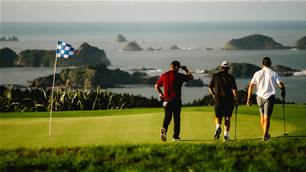
Touring New Zealand: The complete golfing package

